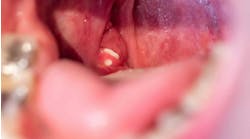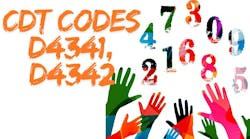“Look at the terminal shank.” “Keep the terminal shank parallel to the long axis of the tooth.” “If the terminal shank is coming across the face of the tooth, you are not using the correct end of the instrument.” “Use the terminal shank as your guide when sharpening.”
Does any of this sound familiar? Whether faculty or student, it’s very likely you’ve said or heard these exact words at some point.
Instrumentation is the fundamental skill for dental hygienists. Proper deposit removal is the core function of our profession, yet 81% of dental hygiene program directors report instrumentation technique as the area of greatest need for remediation with entry level students.1
For faculty and students, teaching and learning proper dental hygiene instrument skills is an extremely subjective and inconsistent obstacle to our educational goals.
Related reading
Hygiene instrumentation, hand health, and ergonomic harmony
Ultrasonic instrumentation in the dental hygiene curricula: Are we teaching to competency?
Until now, there has been no effective standardized method or instrument to ensure impartiality when evaluating student performance. Without proper awareness or attention placed on the terminal shank to produce ideal instrument angulation, subjectivity remains a key factor and hindrance to evaluation. Adult learners may feel embarrassed and fail to ask questions when they do not understand concepts.2
A paradigm change introduced
Grasping the concept of angulation becomes more confusing as complex instrument shanks are introduced. Concerns such as these can be addressed by understanding and focusing on an instrument’s terminal shank. VisiCue, a new instrument concept, has enhanced the terminal shank and is a disruptive paradigm change to the training and calibration of dental hygiene instrumentation.
The Commission of Dental Accreditation (CODA) regulates all accredited dental hygiene programs. It requires students to successfully demonstrate the use of various instruments while self-evaluating their progress and skills when using instruments on patients in clinical settings.3 Mastery of dental hygiene instrumentation requires students to receive consistent instruction and feedback from their instructors.4
With this unique design, dental hygiene programs not only have access to an effective teaching tool that helps students self-evaluate their clinical skills, but also promotes a standardized approach to faculty calibration. Private dental practices and dental service organizations (DSOs) may also seek instruments to calibrate with new staff and establish standardized sharpening to ensure all clinicians are familiar with an office’s processes.
It’s time to improve the way we teach instrumentation! Find more information at visualdentalsolutions.com.
References
- Wood DF, Villalpando MT, Holt LA, Branson BG. Factors associated with clinical skills remediation in dental hygiene education programs. J Dent Hygiene. 2014;88(1):13-19.
- Tofade T, Elsner J, Haines ST. Best practice strategies for effective use of questions as a teaching tool. Am J Pharm Educ. 2013;77(7):155. doi:10.5688/ajpe777155. PMID:24052658; PMCID:PMC3776909
- Sanderson TR, Kearney RC, Kissell D, Salisbury J. Evaluating student self-assessment through video-recorded patient simulations. J Dent Hygiene. 2016;90(4):257-262. https://jdh.adha.org/content/jdenthyg/90/4/257.full.pdf
- Collins J. The not-so-small role of instrumentation: The reality about dental hygiene's tools of the trade. April 1, 2017. https://www.rdhmag.com/patient-care/article/16409828/the-notsosmall-role-of-instrumentation-the-reality-about-dental-hygienes-tools-of-the-trade







